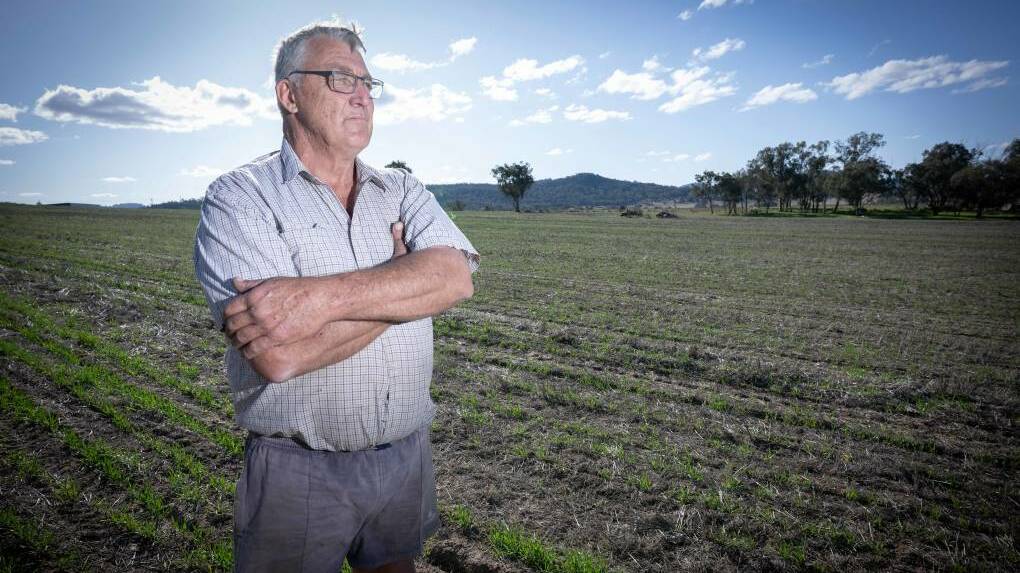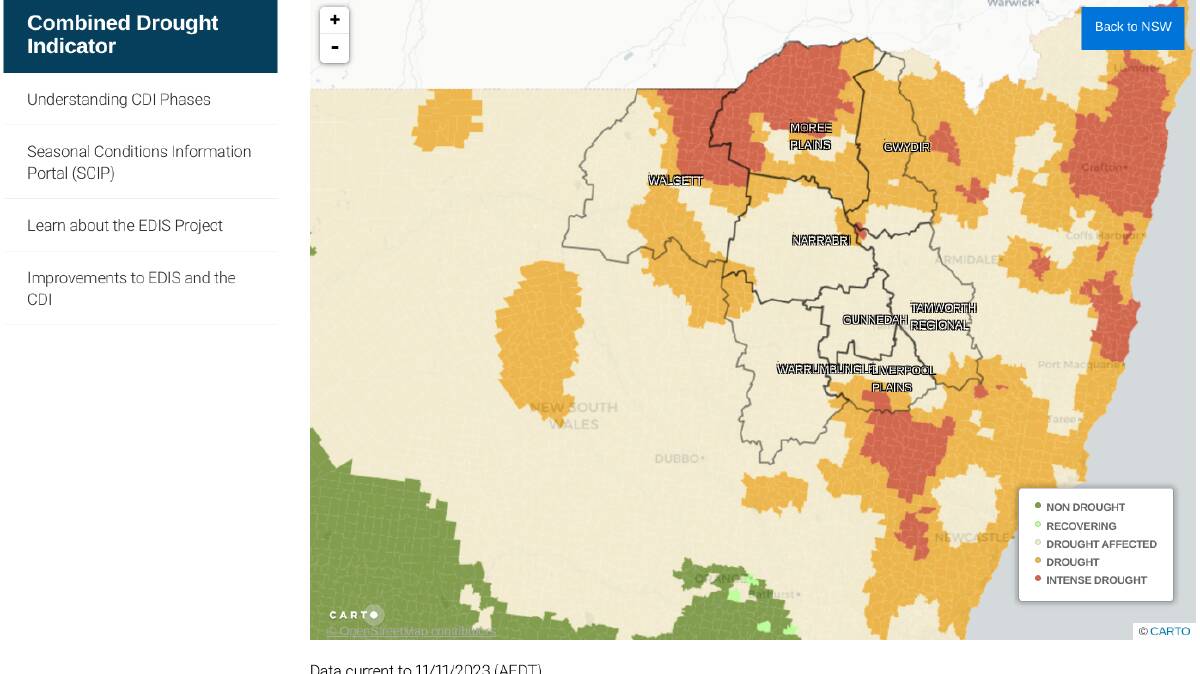
Xavier Martin is one of a few farmers across the NSW North West who did not plant any of his usual winter crops due to soil conditions and the seasonal outlook.
Subscribe now for unlimited access.
or signup to continue reading
"They either didn't plant crops at all, or they significantly reduced their cropping area, or they chose species of crops better able to cope with drier seasons, like barley," Mr Martin said of some agricultural farmers in the North West.
Mr Martin is now "carefully" watching the soil moisture, storm events and weather forecasts before he decides when, or if, to plant any summer crops.
"The window is starting to close on the main summer crops across the North West, including bean, sorghum and cotton," Mr Martin, who is also a member of NSW Farmers, said.
"But the window for sunflowers and mung beans remains open until soon after New Year."
It comes as the Bureau of Meteorology (BoM) classed the previous three months from August to October as the warmest in the New England North West since the national weather agency began collecting climate data in the 1900s.
"It was about three degrees above average which is quite significant," BoM senior climatologist Hugh McDowell said.
As a result and combined with low rainfall, the lack of feed has sent farmer requests to Rural Aid, from drought hot-spots mainly in the New England, Hunter Valley and Northern Rivers, skyrocketing to $1 million, according to the charity's CEO John Warlters.
"We're really concerned at Rural Aid that we are almost at a bit of a tipping point right now," Mr Warlters said.
"Collectively, it means we're all on edge, and we know that really puts so much more stress and worry on our farmers at this time."
Tintinhull farmer Col Quast said the crops he grows to feed the turkeys he breeds are down about 25 to 30 per cent, and that he is having to source grain from elsewhere.
"We will nowhere near grow enough of our own," Mr Quast said.
"At the moment we're carting in barley from Boggabri, and hopefully, I am tee-ing up with some local farmers to buy their wheat."
Mr Quast said even the wildlife is coming in to feed, with swathes of his crops on his farm at Curlewis being wiped out by hungrier-than-usual wild pigs.
It is a situation Mr Martin wholeheartedly agrees with, saying "the kangaroos are enjoying the farm water supplies just as much as the sheep and the cows".
"They're all making survival in the landscape a priority at the moment," Mr Martin said.

The entire NSW North West region, including Tamworth, Gunnedah and Narrabri, are all drought-declared by the NSW Department of Primary Industries
Mr McDowell said the forecast for the months ahead are difficult to predict at this stage but that there is a fifty-fifty medium chance of rainfall.
READ ALSO:
Our journalists work hard to provide local, up-to-date news to the community. This is how you can continue to access our trusted content:
- Bookmark northerndailyleader.com.au
- Make sure you are signed up for our breaking and regular headlines newsletters
- Follow us on Twitter
- Follow us on Instagram
- Follow us on Google News

